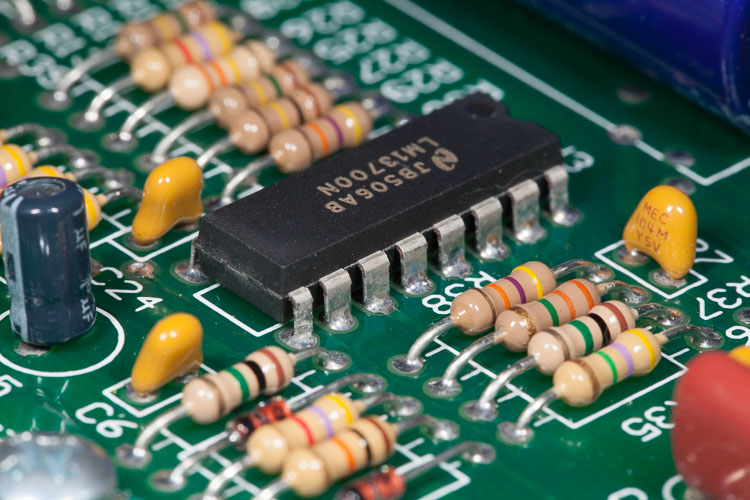"They knew why..." " this censored IC " - Thierry.
LOL ;-)
I must object to your unfairly blaming a superb reliable IC for the failure of the EW designer to protect it from possible out-of-spec conditions! The LM13700 is now one of the very few low cost OTA's one can get, if not the only one... We dont want to lose it! - If it became unavailable one would probably need to construct OTA's from expensive matched transistor arrays like the THATS parts (good arrays are as hard to find as other OTA's).
As for "they knew why" well, it makes sense to socket components where applicable, even if one isnt abusing them! ... But given the choice between spending the money on a socket, or spending it on ESD protection, I would have chosen the latter.. For their cost, fitting both is the only wise route.
Fred.
*It should be noted that theremins are at ESD risk even if they are not powered! - It the theremin is connected to ground through ANY route (wiring to amplifier etc) thn the antennas are just as suseptable to ESD and damage can occur, whether turned on or not, whether the power supply is connected or not.
Just did a purely theoretical look at the volume circuit - The primary and lowest Z path for ESD that I could see was: L10->L9->L8->D1->C12->R17->GND.
Also C12 and L7 ->Q7:B then to +12V via Q7 Vbc, and to GND via Q7 be and R16.. Q6 is at risk via Q7e->Q6 Vbe ->R15->GND and also to a (much) lesser extent via Vec->L14->L11->+12V.
Then via R14, (dont think of this as a 1M resistor - with ESD its voltage will be grossly exceeded) to U3b, C27, R35, R37, D5 and C28 .. All of these components could have seen voltages well in excess of their specifications.
I would rate, purely from the schematic and not accounting for layout issues (which might alter everything) the components most at risk in the following order: those marked * are ones most likely to have sustained critical damage, others are likely to have sustained less critical damage
D1*, C12*, Q7*, C15,R17, Q6*,R15,C14, R14*,U3*,R35,C27,R37,D5*,R16,
I might replace these also.. Q8*,C16,R19,R20,C17,C18,R21,R22,R18,R40
The inductors L10 to L7 could have flashed, but IMO it is unlikely that non-recoverable failure would occur, and would be unlikely to replace these..
There are other possible paths, but I think the above covers the most likely damage routes BASED ON THE SCHEMATIC - I would certainly replace all these components if the theremin was mine to repair.. total parts cost well less than £5, and less than 15 minutes to do the replacement - I wouldnt even bother testing to find out which components had failed..
------------------
PLEASE NOTE - I am in no way trying to out-do Thierry here! Hands on, practical repair expierience is many times more valuable when it comes to matters like ESD than any theoretical "breakdown"! .. I am just exploring the theoretical which happens to confirm Thierrys first and subsequent suggestions! - but even if my analysis had turned out completely different, Thierry's would have been the one to listen to!
------------------
Added >> Quick look at pitch antenna ESD paths..
Primary routes: Antenna -> L1 to L4 -> C2 ->D4 and Antenna -> L1 to L4 -> Q1C
I would guess the following components are most at risk, in the following order: [enclosed] I would rate at equal risk..
[Q1*,C2,D4*,R2],[R23,U3*],[C1,C3,R3,Q2*,R1],[C6,Q3*]
-----------------
Looking at adding protection - A discharge tube between each antenna and ground is the first thing I would add, then on the volume circuit a transorb across C27 as well, and I would replace D1 with a better diode having high reverse voltage - perhaps one of the MUR family.
On the pitch side I would also add a transorb between Q1:C and ground. The capacitance of the transorb is insignificant at Q1:C and across C27. Alternatively, instead of transorbs, two fast diodes to the supply rails to clamp these points to rail voltages.
I would NOT fit transorbs or diodes without having a discharge tube on the antennas, as whilst these would protect the electronics, they would probably increase risk of damage to the inductors from ESD if discharge tubes were not fitted.. Discharge tubes are, IMO, Essential.




